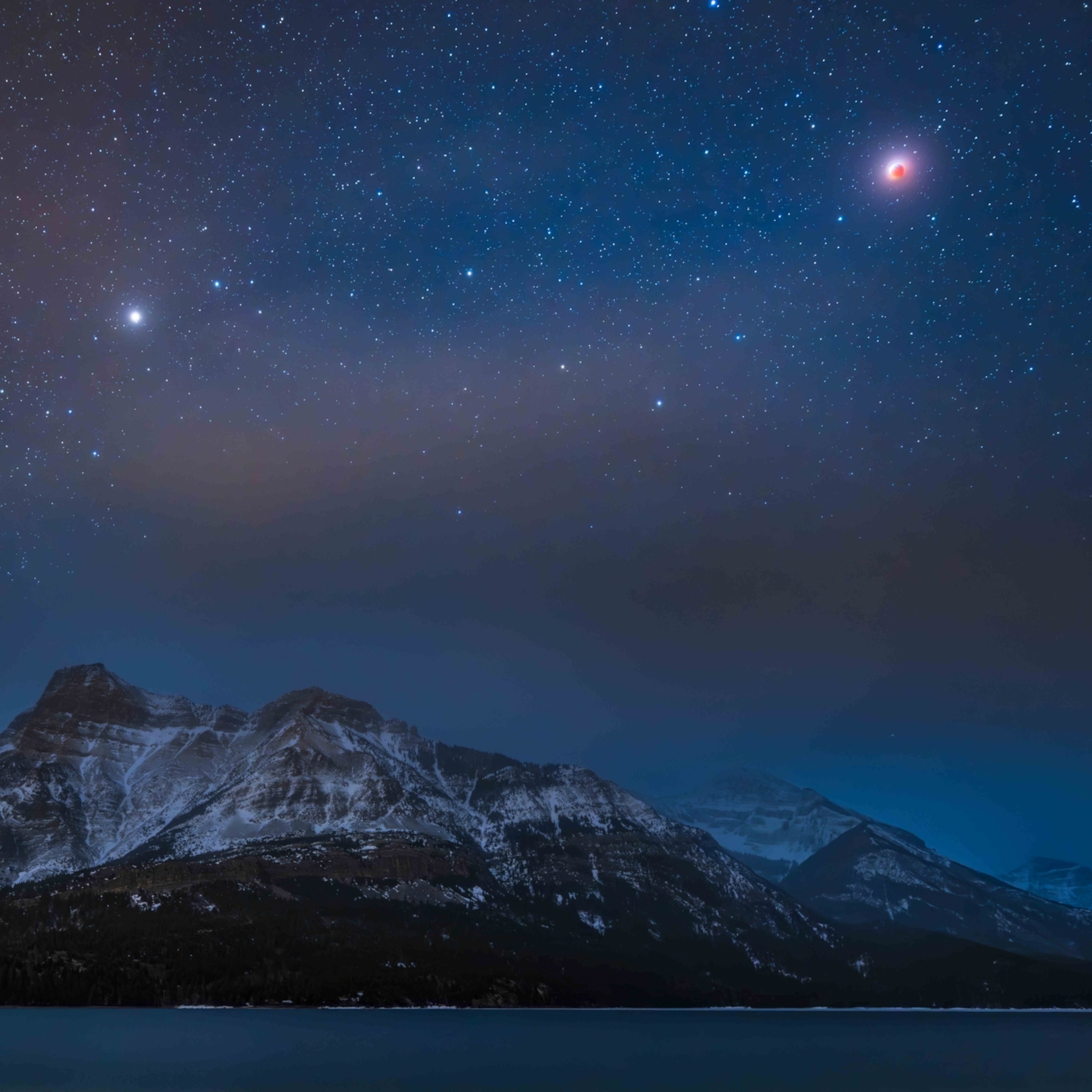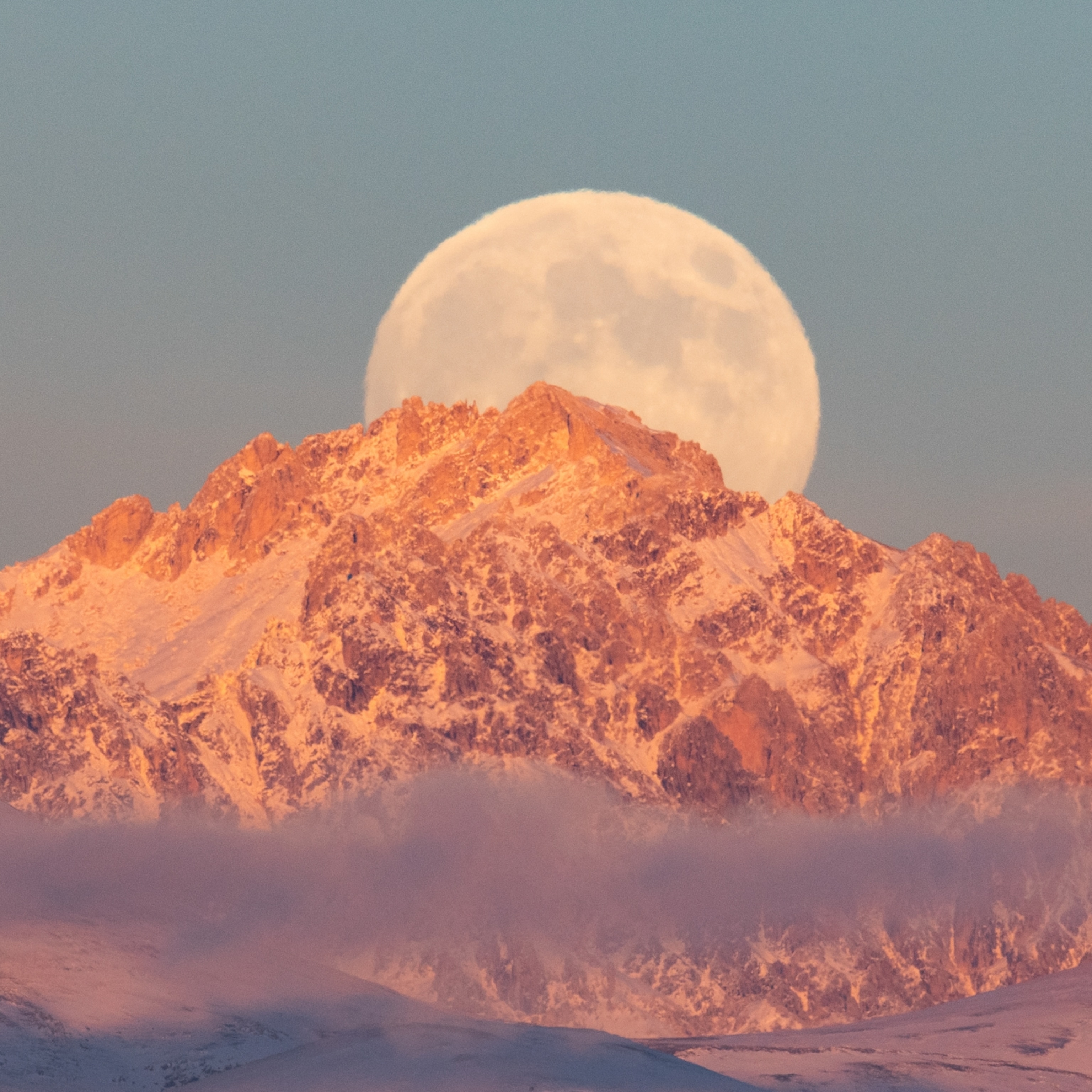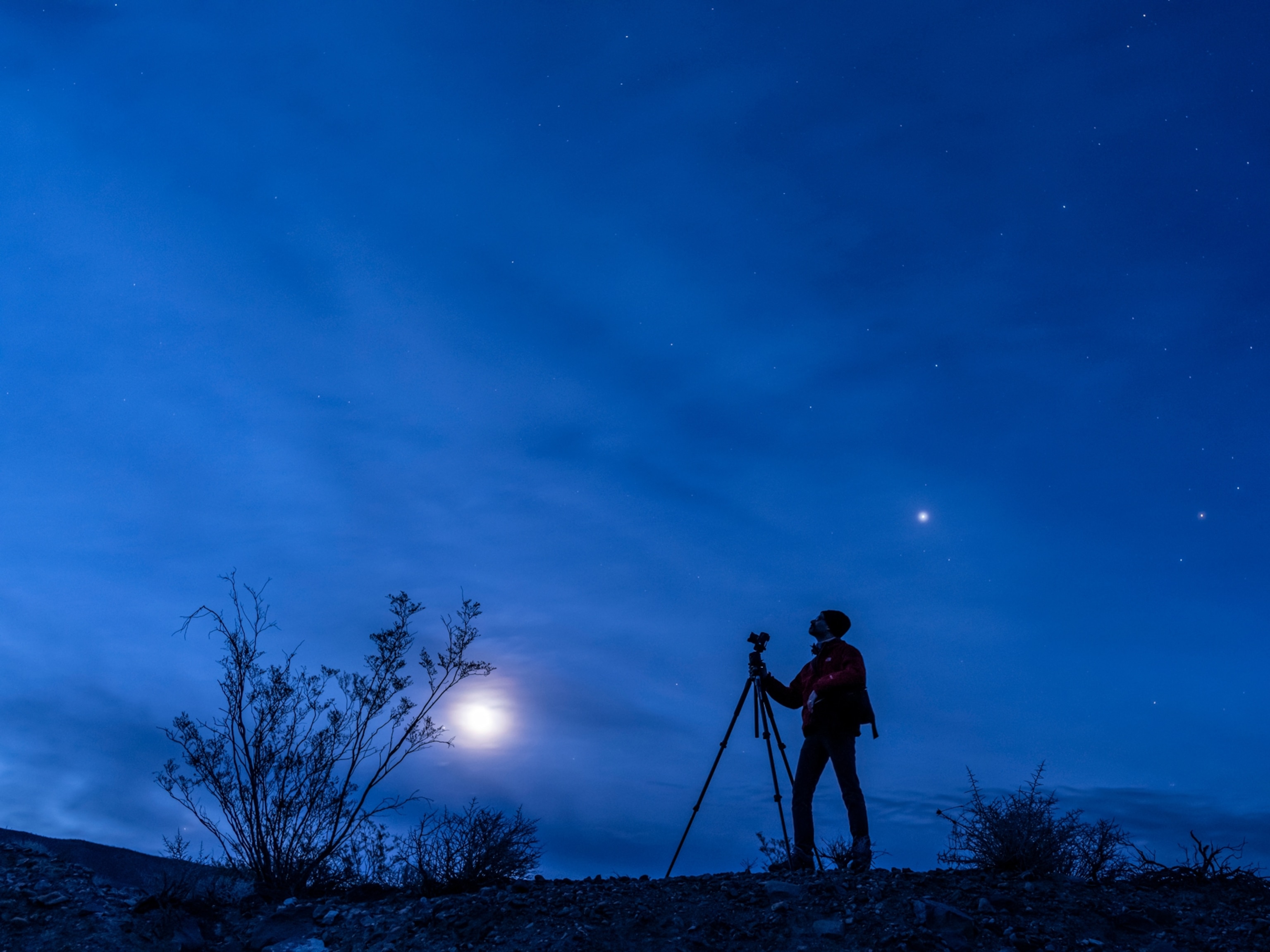
How to watch the ‘super flower blood moon’ eclipse
The first total lunar eclipse since 2019 promises to put on an exciting show for some lucky sky-watchers.
It’s been more than two years since the last total lunar eclipse—but that drought will come to an end on Wednesday with the arrival of the “super flower blood moon.”
This total lunar eclipse will happen in the early morning of May 26 for viewers in western North America and far southern South America, as well as for people watching from the Hawaiian Islands. Observers in Australia, New Zealand, and parts of Southeast Asia should look for it on the evening of the 26th.
A lunar eclipse happens when Earth passes between the sun and the moon, with our planet’s shadow darkening the lunar disk. Rather than going completely dark, the eclipsed portion of the moon can turn interesting colors due to the way light scatters in our atmosphere, often culminating in a deep blood-red hue. That’s why total lunar eclipses are sometimes called blood moons.
Adding to the drama, this eclipse coincides with the year’s biggest and brightest full moon. During the event, the moon will be near apogee—the closest point to Earth in its egg-shaped orbit. It will appear only a bit larger in the sky than average, but that still earns it the popular nickname “supermoon.” The May full moon is also commonly called the flower moon, because of a traditional association with flowers blooming at this time of year in North America.
The moon in bloom
Though not as spectacular as solar eclipses, lunar eclipses are more democratic, because they can be seen from a much larger portion of the planet. During a total solar eclipse, only those within a narrow path on Earth’s surface get to see the sun completely blocked out by the moon. But with a lunar eclipse, we’re watching the moon pass through Earth’s shadow—something that can be witnessed from any spot where the moon is above the horizon. Lunar eclipses also unfold at a much more leisurely pace, allowing plenty of time to enjoy the moon’s changing appearance as the eclipse progresses.
Best of all, unlike a solar eclipse, lunar eclipses are completely safe to view without special filters. You can observe it with binoculars, a telescope, a telephoto lens, or soak up the celestial show with just your eyes.
The bad news is that the sun, Earth, and moon will not be perfectly lined up during this eclipse. As a result, the moon will pass through the edge rather than the center of Earth’s shadow. That means totality will last just 14 and a half minutes, well short of the theoretical maximum of almost two hours.
For viewers in North America, the partial phase of the eclipse will begin at 2:45 a.m. Pacific Daylight Time, with totality beginning at 4:11 a.m. PDT. Totality will come to an end as the moon begins to emerge from Earth’s shadow at 4:26 a.m. PDT. You’ll need an unobstructed view to the southwest, as the moon will be low in the sky. For observers in Los Angeles, for example, the moon will stand about 10 degrees above the horizon as totality ends, and it will set about an hour and a half later, while still partially eclipsed.
Observers in Sydney, Australia, will see the eclipse blossom in prime time, with the moon beginning to enter Earth’s shadow at 7:45 p.m. Australian Eastern Standard Time. The total phase will begin at 9:11 p.m. AEST, with the moon high in the eastern sky. Totality will end at 9:26 p.m., with the partial phases continuing until 10:52 p.m.
The hue of the eclipsed moon can vary greatly, depending on conditions in Earth’s atmosphere. Normally, the moon shines with a silvery hue due to sunlight bouncing off its mottled gray surface. During a lunar eclipse, Earth blocks direct sunlight from reaching the moon. However, rays of sunlight can still be refracted through our atmosphere, and some of those rays will reach the moon and then be reflected back toward Earth.
Red light, with its longer wavelengths, passes more easily through the atmosphere and so dominates during an eclipse—essentially the same reason that sunrises and sunsets appear reddish. If a volcano erupts around the same time, that can scatter more ash and dust in the atmosphere, making the eclipsed moon appear a darker shade of red.
An astronaut standing on the near side of the moon during a lunar eclipse would see a remarkable sight: They’d be viewing a solar eclipse, with Earth appearing as a black disk surrounded by a thin orange or red ring—our atmosphere, refracting the sun’s rays.
Extra starry sights
During totality, take a few minutes to study the sky. With the light of the full moon dimmed, more stars and constellations may spring into view, especially if you’re viewing far away from city lights.
During this month’s eclipse, the moon will be in the southern zodiac constellation of Scorpio; look for its brightest star, orange-red Antares, six and a half degrees to the left of the moon. That’s about a dozen times the moon’s apparent size, or a bit more than the width of your first held at arm’s length. Also look for the bright planet Jupiter, and somewhat dimmer Saturn, in the southeast.
The last total lunar eclipse occurred on January 21, 2019, though the last one visible from the continental U.S. was almost three years ago, on July 27, 2018. The wait until the next lunar eclipse will be much shorter, with a partial lunar eclipse due on November 19 that will be almost total, as more than 97 percent of the moon’s disk will disappear into Earth’s shadow.
A partial solar eclipse is also coming up on the morning of June 10, when the moon will partially block the sun’s light for observers in the northeastern U.S., eastern Canada, and parts of Europe and Asia.
Dan Falk (@danfalk) is a science journalist based in Toronto. His books include The Science of Shakespeare and In Search of Time.







